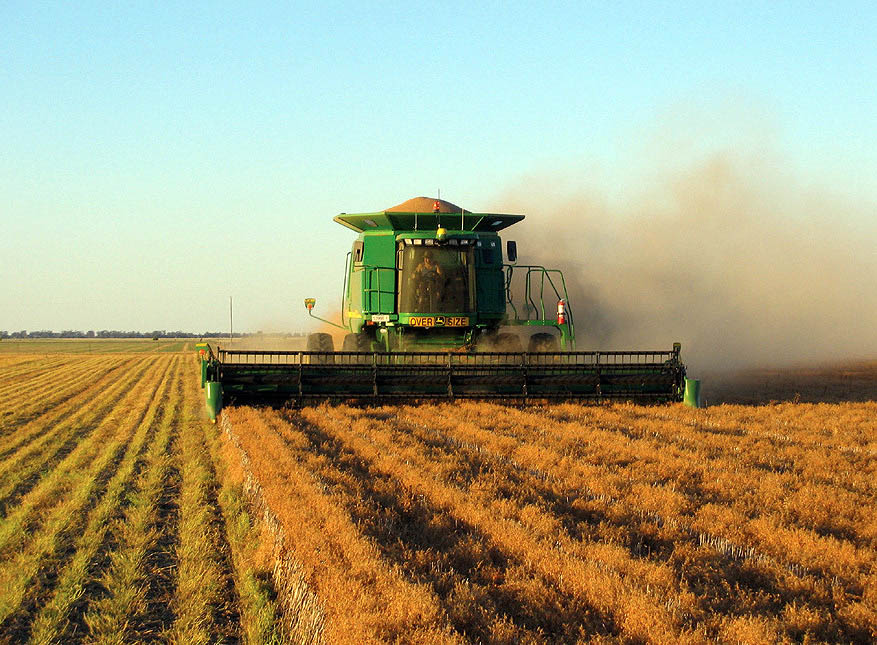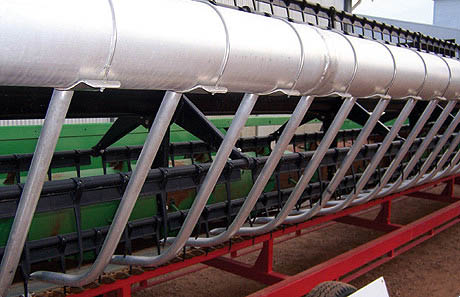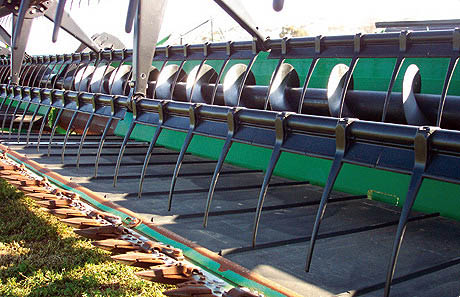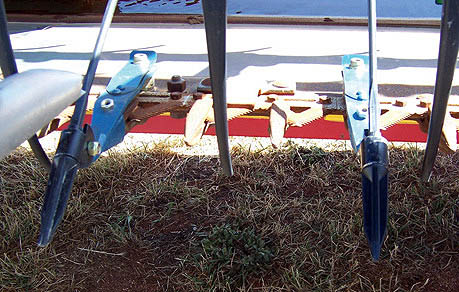Timing of harvest
Lentils can be delivered at up to 14% moisture content where aeration is possible, aiding early harvest.
Early harvesting maximises quality. Crops harvested even a few days later when conditions are very dry, have a far greater proportion of split and broken grain (defectives) and increased levels of ascochyta blight and weather damage. Lodging also occurs and seed becomes brittle, discoloured, prone to mould, and germination is reduced. Harvest efficiency is also dramatically reduced.
Often the difference between a crop that is easy to reap and one that is more difficult is 2 to 5 days. Uniformity of ripening and earlier harvest date can be influenced by desiccation, crop topping or windrowing lentils at the correct growth stage.

Harvesting lentils.
Lentils ripen quickly, but unevenly. Seed that develops from first flowers (lowest pods) mature before seed from the later flowers (top pods). Some foliage or stem may still be green when the crop is ready to harvest. Harvest when the lower pods have turned a pale brown colour and their seeds rattle in the pods. Seed moisture content of 15% is satisfactory, although seed needs to be at 12 or 13% for safe storage.
Crops that remain upright at maturity are more prone to pod drop during windy conditions, so early harvest is essential. Standing stubble may give some wind protection.
Boomer markets prefer a large sized seed with bright green colour free of environmental blemish and staining. Delayed harvest can result in poorer seed colour and blemished seed. It is more prone to shattering than other varieties and delayed harvest can result in seed loss and reduced grain yield.

Air system to assist harvest.

Draper front.

Short lentil lifters and air assist.
R Ruwoldt; W Hawthorne, Pulse Australia
 Skip to main content
Skip to main content